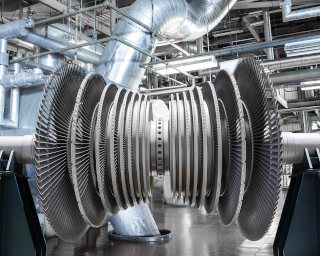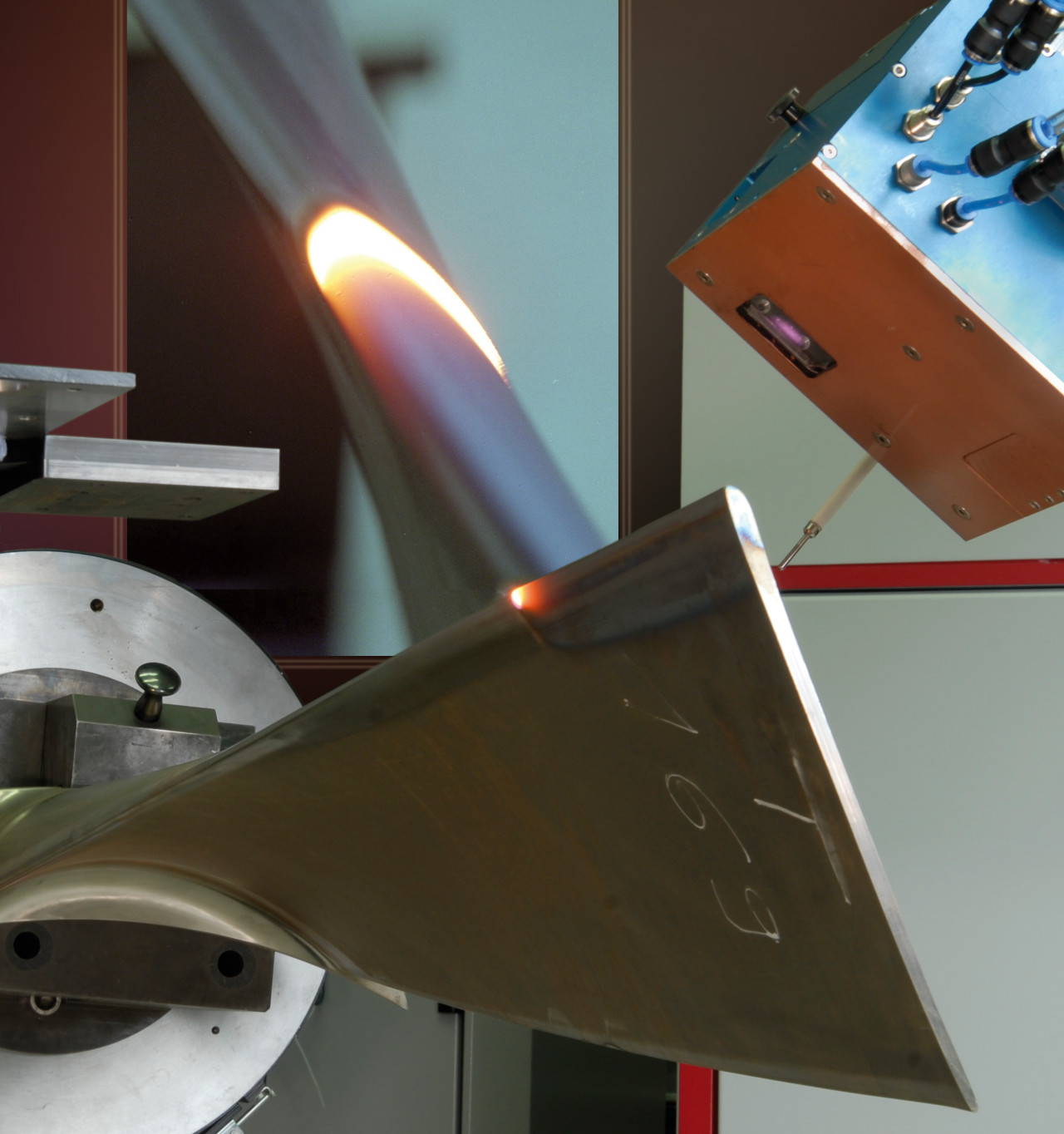Power generation with steam turbines is an essential factor in global energy supply. Steam turbines are used in numerous power plants based on fossil and renewable energy sources, such as geothermal or solar thermal power plants. During operation, the turbine blades are exposed to high mechanical load. In addition, tiny water droplets condensing from the steam cause massive damage to the leading edges. The blades are typically made of martensitic hardening or precipitation hardening steels, whose strength and microstructural properties are optimized for use under high centrifugal forces and fatigue loads, but exhibit significant shortcomings against droplet impact wear.
To resist the entire load mix, Fraunhofer IWS scientists have developed special processes for both material classes. These processes harden the surface layer at the leading edges to withstand the load and thus increase the service life of the turbine blades. After locally laser heat treating the leading edge – depending on the material – a customized subsequent furnace treatment is usually required to set the best possible strength and residual load state for the application. In this way, the surface layer becomes hard and wear-resistant at particularly loaded points, while the core remains unchanged in its pre-optimized hard-tough state.
The monitoring and control of the complex process is achieved with the Fraunhofer IWS developed system technology for temperature field control using special thermal imaging cameras (type "E-MAqS") in combination with dynamic beam shaping (scanning system "LASSY").
During the last 25 years, Fraunhofer IWS scientists have developed laser hardening processes for numerous turbine blade types and steels for industrial partners and hardened more than 55,000 turbine blades. In total, an estimated more than 1,000 turbines with laser-hardened turbine blades are in operation in power plants worldwide.
 Fraunhofer Institute for Material and Beam Technology IWS
Fraunhofer Institute for Material and Beam Technology IWS
